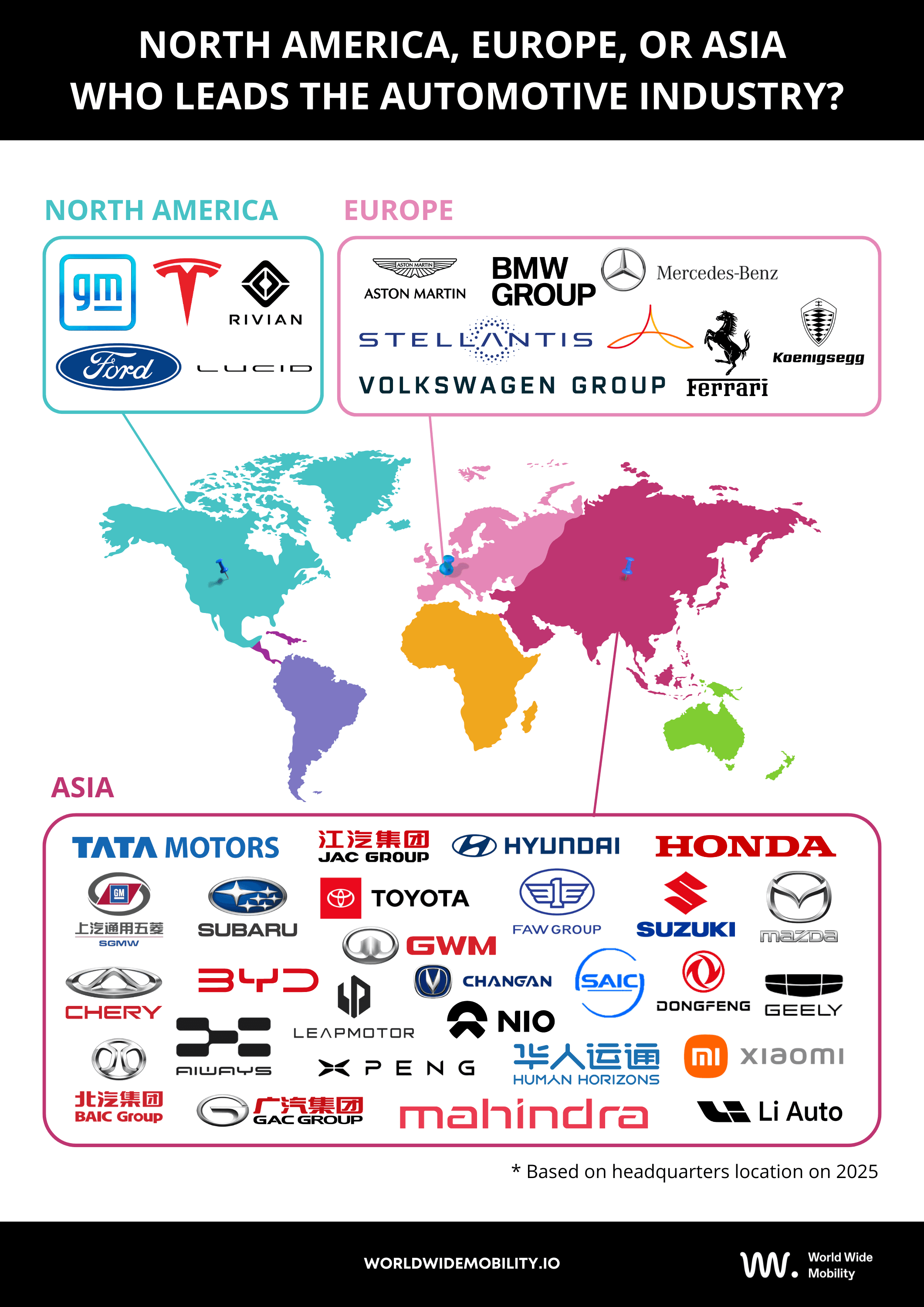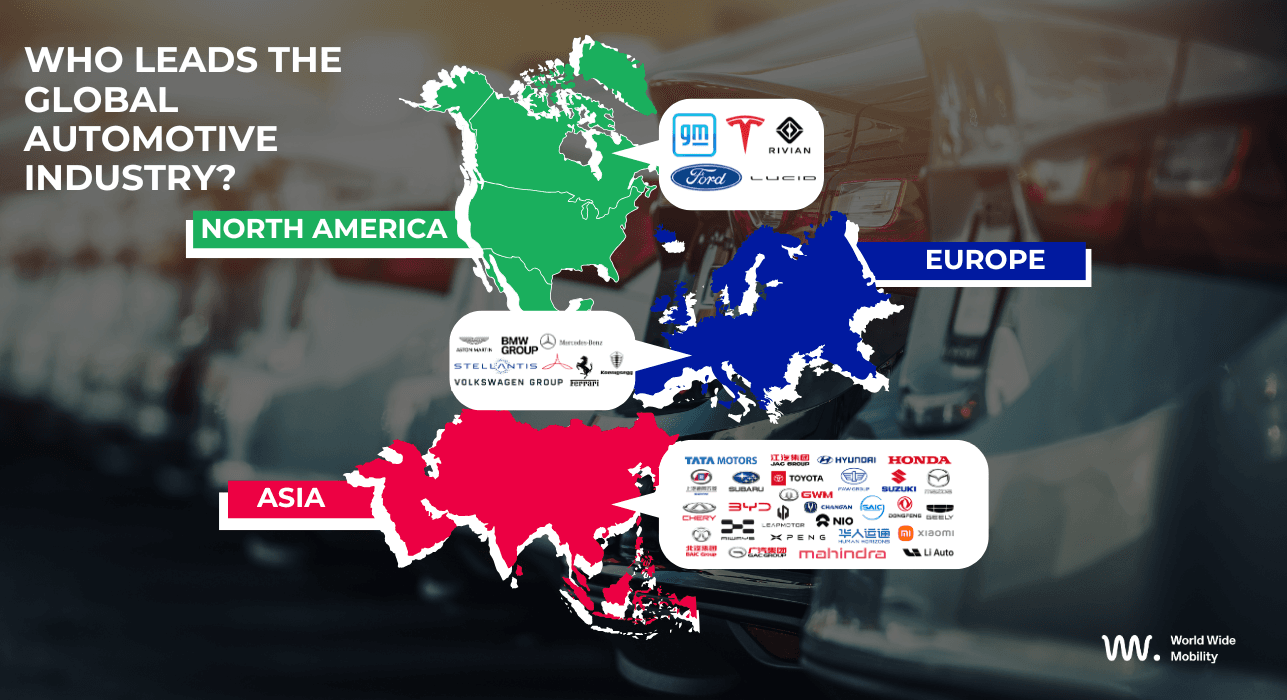The global automotive market is undergoing a profound transformation. For decades, North America and Europe held the crown, but in 2025, Asia led by China has become the new powerhouse of automotive innovation, production, and technology.
At World Wide Mobility, we created a graphic that clearly illustrates where the headquarters of the world’s leading car manufacturers are located today. This map is not just a geographic snapshot: it reflects a shift in global power within the automotive and mobility industry.

From Detroit and Stuttgart to Shanghai and Shenzhen: The new automotive map
North America: The origins of the industry
Throughout much of the 20th century, the United States dominated global automotive manufacturing. Giants like Ford and General Motors revolutionized mobility with mass production and the popularization of the private car.
In recent years, innovative players such as Tesla, Rivian, and Lucid have reshaped the image of North America, driving progress in high-performance, long-range electric vehicles. However, despite its influence, the region has fewer new manufacturers and disruptive startups compared to the explosive growth seen in Asia.
Europe: Tradition, luxury, and transition
Europe remains a key player, home to iconic brands such as Volkswagen Group, BMW, Mercedes-Benz, Ferrari, Aston Martin, and Stellantis. For decades, Germany, Italy, France, and the UK have been synonymous with quality, safety, and design.
But the shift toward electrification, high production costs, strict environmental regulations, and global competition are pressuring European automakers. While major investments in digital innovation and EVs are underway, Europe lags behind Asia in terms of speed, scale, and flexibility.
Asia: The new global leader
The most significant transformation has taken place in Asia, especially China. In just two decades, the region has evolved from being a production hub for Western automakers to becoming the center of its own global brands with cutting edge technology.
Key examples include:
- Japan: Toyota, Honda, Subaru, Mazda
- South Korea: Hyundai, Kia
- China: BYD, NIO, XPeng, Li Auto, Geely, Changan, SAIC, FAW Group, among others
Beyond traditional manufacturers, tech giants like Xiaomi and Huawei are entering the EV race, blurring the line between the tech and automotive industries. Advanced integration of AI, big data, and digital ecosystems in vehicles, particularly in China, sets Asia apart from Western competitors.
Why is Asia leading the automotive industry in 2025?
Asia’s rise is no accident. Several key factors explain its leadership:
- Massive investment in R&D, especially in EVs and battery technology.
- Strong government support, with subsidies, tax incentives, and electrification policies.
- Robust tech ecosystems, fostering collaboration between carmakers, battery producers, and software companies.
- Unmatched production capacity, enabling faster time-to-market for new models.
The new automotive landscape
This global map is more than a graphic, it’s a snapshot of a paradigm shift. While North America and Europe remain important players with historic brands and engineering expertise, Asia now sets the pace for the future of mobility: integrated, electric, intelligent, and sustainable solutions.
The future of mobility is here, and It’s in Asia
Tomorrow’s mobility is being built today in innovation hubs like Shenzhen, Seoul, and Tokyo. While Detroit and Stuttgart remain influential, the gravitational pull of the automotive world has clearly shifted eastward.
